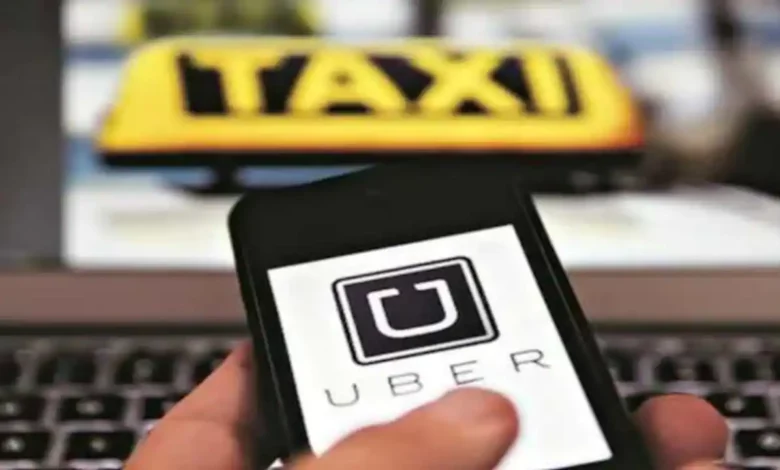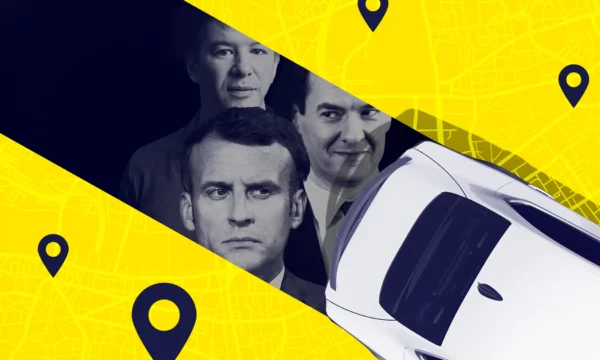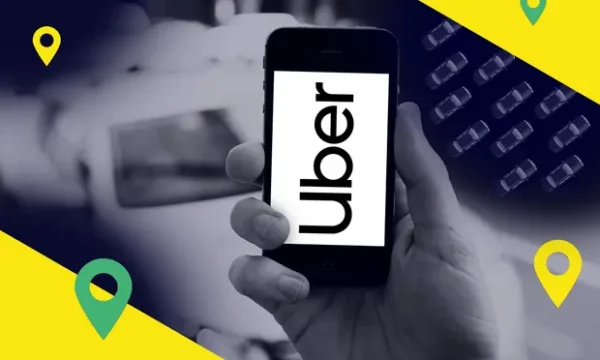Uber Cab Services Files Leak: What Was Revealed, How Was It Leaked?

Uber Cab Services Files Leak: What Was Revealed, How Was It Leaked?
The worldwide ride-hailing platform Uber and its unethical activities over the years to emerge as a global leader are hot topics in both online and offline media headlines.
The globe woke on Sunday to the stunning revelation of “The Uber Files.” It contained over 124,000 documents that were initially released to “The Guardian” and “The Internal Consortium of Investigative Journalists.” These records demonstrated the illicit and frequently violent means by which the tech giant was able to grow so quickly.
The shockwaves persisted on Monday when Mark MacGann, a former top lobbyist for Uber in Europe, the Middle East, and Africa, claimed responsibility for the data leak. He declared, “It is my job to stand up and help parliamentarians and government officials put some fundamental wrongs right. I was morally compelled to take action.

About Uber
Under the name Ubercab, the US-based ride-hailing firm Uber was established in 2009. It has become so well-known in the sharing economy that its aftereffects are known as uberization. In 2019, Uber’s cab services held a staggering 67 per cent of the market in the United States. While providing meal delivery services, Uber Eats held a 24 per cent market share in the industry in 2018.
Uber Cab’s first nationwide growth occurred in 2011, which made the entire city of New York aware of its presence. Uber has experienced several milestones of success, discoveries, controversies, and expansion during the course of its ten-year journey, and these events combined have made Uber a household name. Uber cabs currently operate in more than 72 countries and provide you with the choice to select from a variety of transport alternatives, including affordable trips, two-wheelers, cars, and SUVs.
Uber is attempting to branch out into new industries by offering services like Uber Eats (food delivery) and Uber Freight ( logistics). Uber is trying to advance the field of self-driving cars once further through its Uber Advanced Technologies Group.
USP
First of all, customers no longer need to wait for their rides—all it takes is one tap. Additionally, users can plan their routes, and the Uber application’s features make paying for rides easier. Uber receives higher revenues because of a few features.
1. Variety of cars- With segments like Uber X, Uber Black, Uber taxi, and Uber SUV, they got a choice for everyone.
2. Price surge technology- The ride’s cost changes depending on various factors, including the level of demand, the number of drivers available, the volume of inquiries, etc.
3. Rides other than cars- Uber has expanded beyond only automobiles. With the addition of boats, helicopters, and other vehicles to their list, they have upped the ante on their competition. They offer delivery services in San Francisco, ice cream truck deliveries in Paris, and motorcycle pickup services. However, because these choices are only available in a few places, their business model has been expanded to include additional revenue sources.
Industry
Taxi markets are enormous and are projected to expand at a CAGR of 8.95 per cent. The primary drivers of this increase are the rising demand for transportation and the availability of ride-hailing and ride-sharing services. When last published in FY20, the market for Indian online tax services was predicted to increase at a rate of 12.93 per cent.
Startup Story
Garrett Camp and Travis Kalanick were in attendance at a conference in Paris in 2008. The two realised that finding a taxi when needed is quite a bother and that any technology that would make the procedure easier would undoubtedly be popular when they were searching for a cab one evening during the conference but could not find any.
However, the original concept was for a timeshare limo service, where a limousine (a high-end sedan car) would be shared among multiple owners.
Camp continued to mull over the concept after returning to San Francisco, even going so far as to purchase the domain name UberCab.com. Conrad Whelan, Oscar Salazar, and Camp constructed the original UberCab prototype in the middle of 2009. Kalanick was then approached by Camp to join UberCab. With only three cabs, UberCab’s service was initially trialled in New York at the beginning of 2010. UberCab was formally introduced in San Francisco in May 2010.
Growth and Revenue
Some growth milestones achieved by the company are –
- Over 600 cities in over 72 countries are currently served by Uber cabs.
- Globally, there are more than 3.9 million Uber drivers.
- Uber has conducted more than 10 billion journeys worldwide.
- Over 14 million Uber journeys are finished each day.
- According to pre-IPO data, Uber has received a $24.7 billion investment.
- In 2018, Uber was valued at $72 billion; by 2022, that price will be closer to $62 billion.
- Uber went public on May 9th, 2019, and its stock is currently one of the NYSE’s top performers.
Monthly active users of Uber have been steadily increasing. The monthly active users of the US-based taxi aggregators increased at a CAGR of 48.74 per cent from (Q4 2016 to Q4 2020).
According to news from April 9, 2022, Uber India has resumed its endeavour to include Mumbai’s renowned kaali-peeli cabs on its platform. The kaali-peelis were first introduced in 2017, but later that process was toned back. Only 1/5 of the 5K+ kaali-peeli (black and yellow) traditional taxis on Uber’s platform are currently in use.
Uber has recently listed yellow cabs in New York as well, and as a result, it has partnered with Curb and CMT to allow users to book taxis through the Uber cab app. In the nations of South Korea, Spain, Germany, and Japan, such similar Uber collaborations came to pass. According to recent estimates, the New York yellow cabs using Uber will be operational by the end of June 2022.
In 2020, Uber Eats’ revenues doubled. In comparison to the 111 million active users in the fourth quarter of 2019, 93 million individuals will use Uber in 2020. Uber’s FY2021 revenue figures show that the business made $5.78 billion, 83% of Q4 2020 revenue.
Uber’s Business Model
Between cabs and passengers, Uber serves as the middleman. Although it owns no vehicles, it collaborates with taxi owners and makes money from each booking. The local supply and demand at the moment of the booking are the foundation of Uber’s dynamic pricing strategy. The consumer is given a quote for this fare in advance.

What Do the Uber Documents Leak Reveal?
Since its founding in 2009, Uber has courted controversy, from violent disputes among its drivers to employing covert software to elude law authorities.
The five years covered by “The Uber Files,” from 2013 to 2017, where the company’s contentious co-founder Travis Kalanick’s tenure as CEO. After years of controversy, including claims of data breaches and sexual harassment scandals, Kalanick was fired from Uber in 2017.
His turbulent reign at Uber illustrates how he took advantage of the upheaval to accelerate growth. He was the driving force behind Uber’s global expansion, even though he engaged in unethical business tactics and lobbied politicians to pass helpful legislation.
-
Launch of Uber in Paris
Uber made its first European launch in Paris in 2014. Emmanuel Macron, then-president of France and the economy minister, was contacted by Kalanick. To ensure that Uber could operate in Paris without interference, Macron intervened on its behalf, even arranging covert agreements with adversaries in the government.
-
Entry into German Market
Olaf Scholz, who is now the German Chancellor, was the mayor of Hamburg in 2014 and fought Uber lobbyists to open the German market to the company.
-
Taking the help of Joe Biden
At the World Economic Forum, Joe Biden, who was the US Vice-President at the time, and Kalanick had a meeting planned. As a result of the conversation, he modified a line from his original speech at Davos in which he mentioned a CEO whose business would allow millions of employees the freedom to work as many hours as they desired and govern their lives as they saw fit.
-
Kill Switch
To avoid regulators, Uber took many precautions. Uber had placed a “kill switch,” which they engaged to prevent the authorities from accessing the company’s computers, along with lobbying lawmakers and government officials. In Amsterdam, Canada, Belgium, India, Romania, Hungary, and France, the “kill switch” was employed.
-
Endangering Drivers
To embrace chaos, Kalanick advocated putting drivers in danger. Uber’s entry into almost every market was met with organised, occasionally violent protests from taxi driver organisations. He mutely approved of Uber drivers attending these demonstrations. His guiding principle is “Violence ensures success.”
According to the materials, Uber is skilled at using backdoor tactics to gain influence. It demonstrates a business that intentionally broke or disregarded the law and was aware of doing so.
The records discuss how lobbying and connections to influential politicians contributed to its widespread popularity. They also show that business leaders were aware of the immoral nature of their entire enterprise.
Uber’s original concept of letting people drive others in their personal vehicles without permission or licence generally ran into legal snags.

Post-2017 – What Did and Did Not Change at Uber?
Uber has grown to be a 43 billion dollar corporation thanks to the chaos that Kalanick seized upon. But soon after Dara Khosrowshahi took over for Kalanick, claims of sexism and a toxic work environment appear to have subsided.
The business appears to have softened its abrasive stance and now works with licenced drivers who are in possession of particular licences. Despite this, its hiring practices continue to face numerous lawsuits, and its profitability is still in doubt.
Second, while it now appears to operate in compliance, it simply makes a minimal effort to avoid authorities’ notice. Even if they are no longer blatantly breaching the law, their new business strategy is nevertheless quite similar to their old one. It continues to use the judicial system or legal gaps to enforce its chosen laws and regulations.
 Conclusion
Conclusion
The expose’s specifics will only deepen as more information is made public over the next few days. What can be inferred from this is that numerous apps, including Uber, promised innovation.
Instead, they presented flimsily covered examples of fraud and corruption. One can only hope that those tech entrepreneurs who shamelessly break and bend the law face harsh punishment. It might serve as a deterrence for upcoming scams.
edited and proofread by nikita sharma




